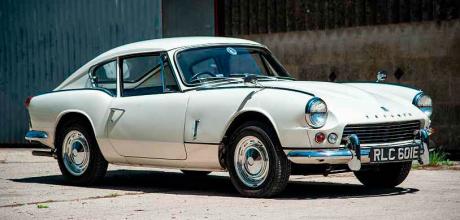1967 Triumph GT6

Chromium is a chemical element occurring naturally in many forms, but in hexavalent form it’s toxic and carcinogenic. And it covers significant parts of an old car, including bumpers, doorhandles and windscreen surrounds. Funny thing though, as Nigel Hayward, production manager at S&T Electroplating, points out: ‘We don’t use a lot. In fact, the chromium is really just a thin lacquer to seal in the nickel-plate underneath.’
The shining
I could have kept Trixie-the- Triumph GT6’s bumpers as they were, but there was a dented front blade and in original chromeplated steel these Mark 1 GT6/ Spitfire units are that dread acronym NLA (No Longer Available). You can get them in stainless, but that yellow-tinged polished metal finish is incredibly vulnerable to scratches and the wrong colour, which will look terrible against Trixie’s clottedcream coachwork. Uh, and the fit can be so-so. So if you have something that fits, then fix it and fit it back.
Besides, it’s nice to think that when Trixie rolled off the line at Canley in 1967, these were the bits of metal that were fixed to her – as Mrs English, a fine-art restorer, says: ‘All you can do with originality is lose it.’
Hayward points out that while we call it ‘chromium plate’, what’s really there is copper and nickel and a lot of elbow grease. Time in the electroplate tanks shows just how: copper 16 to 18 hours; dull nickel half to one hour; bright nickel half to one hour; and chrome, three to four minutes. ‘Chrome is a microns-thick top layer,’ he says.
Most chrome-platers have done away with the dull nickel stage these days, but ‘we do it the way it’s always been done,’ says Hayward, who explains that dull nickel’s value is its excellent corrosion resistance. If S&T’s checking and rechecking process is impressive, the attention to detail and sheer polishing work is stupefying as items go back and forth in the process until they are perfect and you can see your coffee-stained teeth in it.
When you see it done, you also see where your money goes, which helps as this is not a cheap option; about twice the cost of a brand new set of stainless-steel bumpers. I’ve got them back now and dare not even open the crepe bandage-style wrapping.
Fitting them back on is going to be a devil of a job, too. Partly because you have to undo the fuel tank to get at the nearside rear mounting bolt…
Does anyone know how to get a Mark 1 GT6 tank out? I certainly can’t see how it’s done and one experienced GT6 owner advised me to cut away the rear crossmember. And that just can’t be right, can it?
Above and left Originality is preferred when it comes to chrome-plated fittings, but the process of achieving perfect brightwork is surprisingly complicated.

